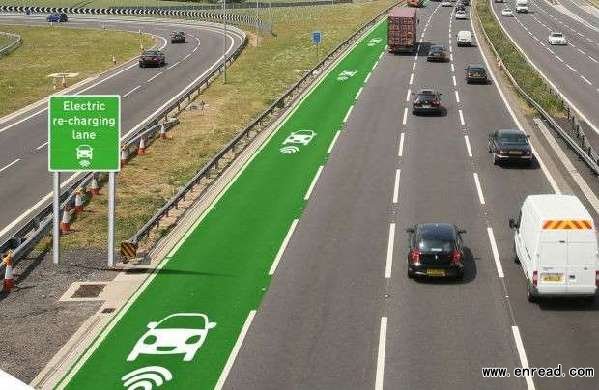The prospect1 of physically2 extracting energy from the roadway may just become a reality, though, if the U.K. government pulls off the test run of a promising3 new tool.
如果英国政府对一项前景广阔的新工具的试运行成功的话,从公路汲取能量的想法或将成为现实。
Off-road trials of "dynamic
wireless4 power transfer" technology are expected to start later this year and run for 18 months, Highways England and Transport Minister Andrew Jones announced. The government will install the devices under test roads and in vehicles, and determine if the charging could work on Britain's busiest roadways. Mobile charging would solve one of the biggest
hurdles5 to electric vehicle use -- staying charged on long drives.
The U.K. has already tested a bunch of different approaches to this technology and identified versions that work and are ready to manufacture. In basic terms, the system has power lines connected to coils under the surface of a road, which then transmit the electricity through the air to a receiver coil in a car. Simply driving down the stretch of road in a properly-equipped electric or hybrid-electric vehicle will power up the batteries.
The power transfer could potentially work for all types of vehicles, the report notes, and since it goes under the road, it won't require building any contraptions above ground that could increase risks of collision or electric shock. The wireless transfer is less
cluttered6 and invasive than the overhead cables used for city trains,
trolleys7, and a prototype zero-emission highway in L.A.
If this works for the highways of Britain, it just might change the game for long-distance EV travel. A full charge of BMW's i3, for instance, lasts 81 miles; it's 84 miles for the Nissan Leaf and 38 miles gas free for the Chevy
Volt8. Those ranges are enough to cover most daily
commutes9, but
insufficient10 for long road trips. Stopping for hours to charge up on the side of a highway isn't going to make you feel much better about saving the earth. Picking up a charge without stopping, though, is one of the cooler things you could ask for from automotive refueling practices.
Charging roads could pair well with another developing technology: street surfaces that generate their own power with solar panels. The Dutch SolaRoad bike path does that for a few hundred feet; in the U.S., Solar Roadways technology is planning for tests in sidewalks and parking lots in Idaho. Perhaps the smart roads of the future will not just make their own energy from the sun but transmit it
wirelessly11 to a zippy fleet of EVs.

 收听单词发音
收听单词发音 


